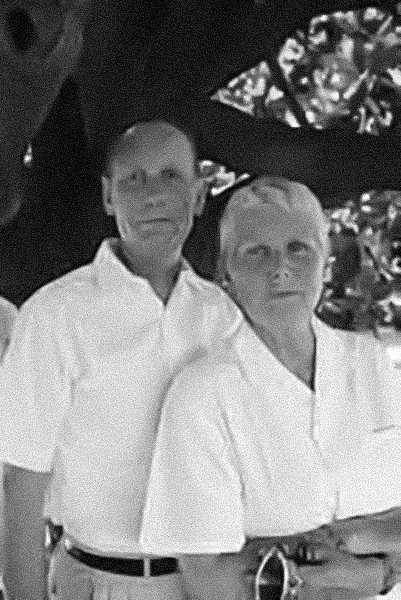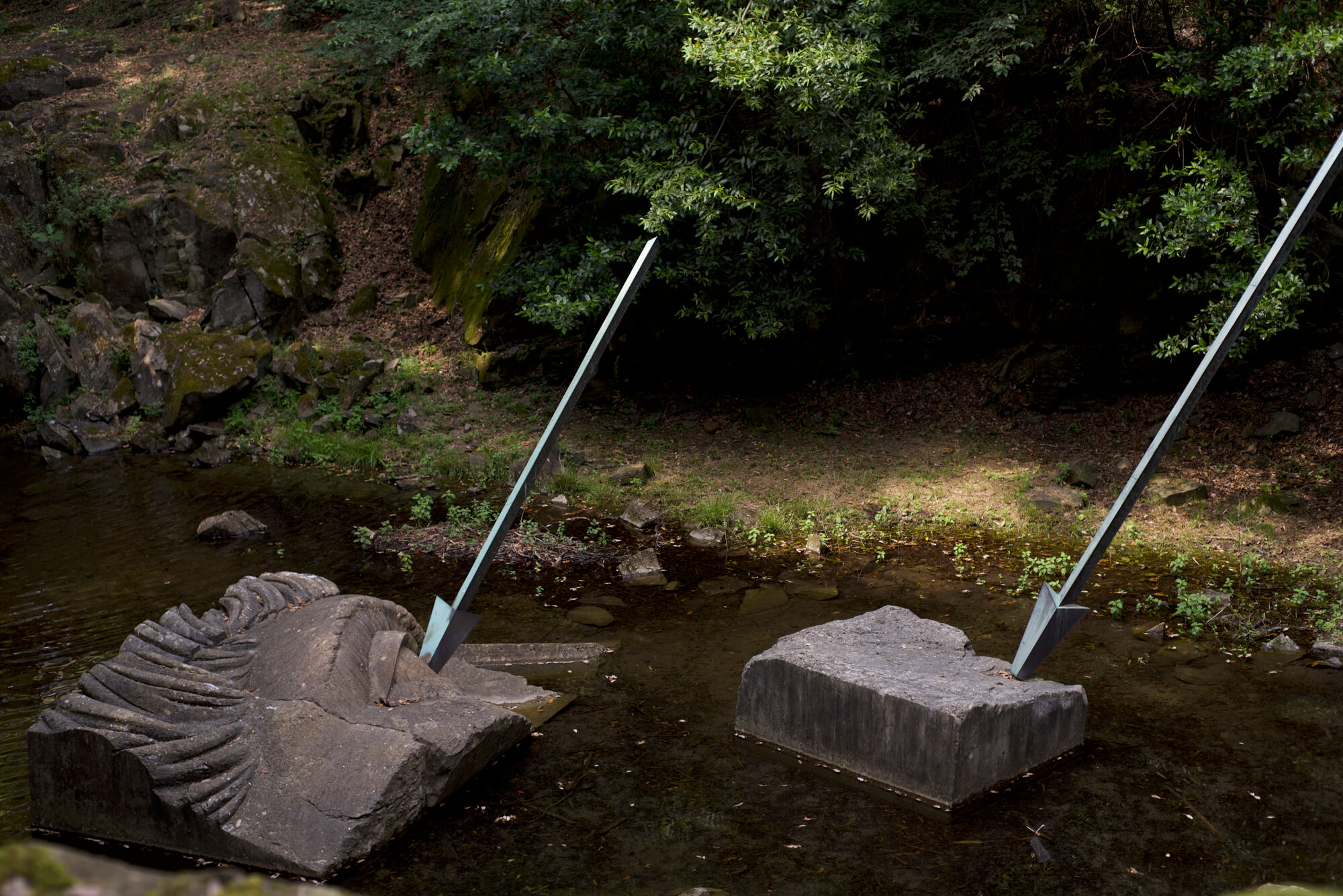Anne e Patrick Poirier (Marsiglia, 1941 – ; Nantes, 1942 -)
Anne and Patrick Poirier were among the first artists to be invited in 1981 to initiate the environmental art project in Celle, despite their previouswork primarily for interior spaces in galleries or museums. All the initial selected artists received color photographic prints illustrating glimpses of the park, including a view of the large waterfall, which would be chosen by the Poiriers for their monumental work La morte di Efialte (The Death of Ephialtes). The installation required the resolution of several technical problems, both due to the scale of the artwork and the chosen site. In fact, a small railway track was constructed to position the large marble eye in the streambed.
With the artwork created for Celle, the couple embarked on a new artistic path that would lead them to direct engagement with nature in their subsequent commissions. Their friendship with Giuliano Gori brought them together multiple times, both in Italy and France, after their stay in Celle. In 2000, they created La stanza bianca del silenzio (The White Room of Silence) in the Padula Park in Carrara, establishing a foundation on which to build the exhibition “Sculpting Marble,” curated by Giuliano Gori, within the 11th edition of the International Biennial “City of Carrara.” In 2012, on the recommendation of the collector, who was part of the municipal committee, the French couple participated in the competition for the redevelopment of the Chiesanuova Cemetery in Prato, with the construction of a crematorium temple, a project that was never completed.






